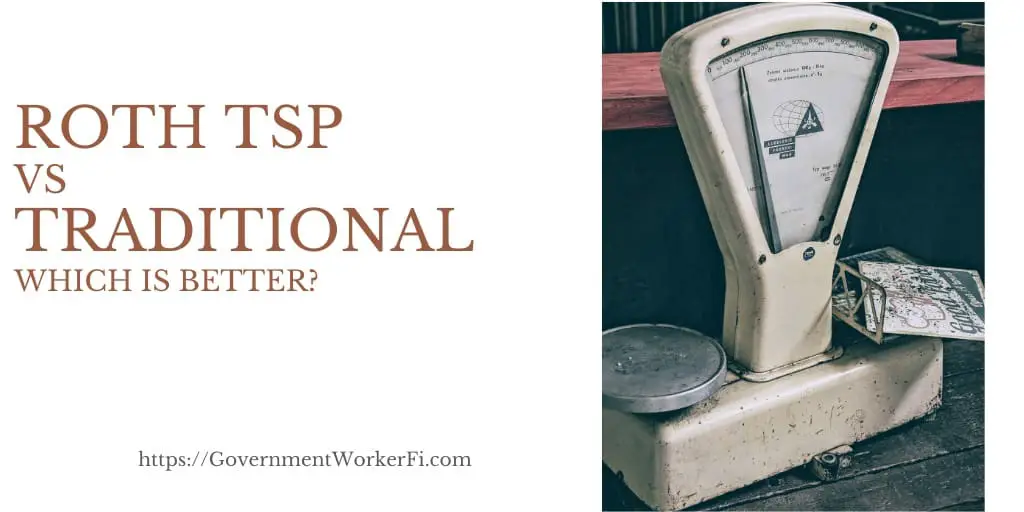If you’ve read this blog before, you know I’m a big fan of the TSP (or Thrift Savings Plan). The TSP has some of the lowest fees in the industry and has a very generous 5% government match.
However, what happens when you need to get the money out of your traditional or Roth TSP?
Perhaps you’ve reached retirement age and want to make a withdrawal as part of your federal retirement strategy?
Or maybe you’re considering a hardship withdrawal but don’t know where to start.
Here is a complete guide on how to withdraw money from the TSP for all circumstances.
Get Gov Worker’s top 4 tips for federal employees!Table of Contents
- An important note about TSP withdrawals
- Can I withdraw my TSP Early? How to withdraw money from your TSP during federal service
- How to withdraw money from the TSP if you leave the government before retirement
- How to withdraw money from the TSP in retirement.
- I’m ready to make a withdrawal, now what?
Please do not confuse my personal blog for financial advice, tax advice or an official position of the U.S. Government. This post may contain affiliate links. If you make a purchase after clicking on a link, I get a small percentage of the sale at no additional cost to you.
An important note about TSP withdrawals
As of 2021, it is still not possible to select which funds are sold when you withdraw from the TSP. Therefore, if you have a portfolio of 70% C Fund, 10% I Fund, 20% G Fund and withdraw $10,000, the TSP will sell $7,000 of C Fund, $1,00 of I Fund, and $2,000 of G Fund.
Can I withdraw my TSP Early? How to withdraw money from your TSP during federal service
The TSP is a retirement account but it is possible to get your money out of the TSP while you’re still working for the government. While you can withdraw money from the TSP while you work for the government, you should know the consequences. These withdrawals deplete your retirement savings and could seriously affect your retirement. You may wish to consult with a financial advisor to understand the consequences of these withdrawals. That being said, there are three options:
- Taking a TSP loan
- Making a hardship withdraw
- Age based withdraws
TSP Loans
It is possible to take a loan from your TSP balance. In this case, you are essentially loaning yourself money. The interest rate on the TSP loan is tied to the G-fund interest rate. In September 2020, the interest rate was a paltry 0.625%. Considering that the current 15 year mortgage is around 2.5% this seems like a pretty great deal.
However, there are caveats. While you are paying back your loan, you’re losing out on the opportunity to grow your investments while the loan amount is out of the TSP. The C fund has returned 13.59% annually over the past 10 years. So that 0.625% loan is actually costing you close to 15% annually.
Also, if you miss payments or separate from the federal government, your loan could be considered a taxable withdrawal. This may result in an unpleasant tax situation. You can read more about TSP loans in TSP Publication #4.
Hardship withdrawals
You can withdraw money because of a demonstrated financial hardship, such as medical bills or legal fees. Unlike a loan, you will permanently lower your TSP after a hardship withdrawal. You can calculate the “opportunity cost” of the withdrawal based on the potential returns of the investment, similar to the cost of a loan.
The IRS treats hardship withdrawals very unfavorably. Not only do you have to pay income tax on the withdrawal, but you have to pay a 10% penalty on top of the taxes.
While it’s nice knowing that you can access your TSP in an emergency, you may want to look at other options before applying for a hardship withdrawal..
Age-based withdrawals
You can withdrawal money from the TSP after you’re 59.5 years old even if you still work for the government. You do not need to claim any hardship to withdraw this money. However, you will need to pay a 20% tax on the withdrawal. You are able to make up to 4 withdrawals per year and the minimum withdrawal is $1,000. If you are thinking about an age based withdraw, you should read TSP Publication #12 for a full breakdown of the process.
How to withdraw money from the TSP if you leave the government before retirement
If you leave the federal government before you retire, you have the option of rolling over your TSP into an IRA. You could also roll the money into a Roth IRA but this would be a taxable event.
You’re also free to leave your money in the TSP if your account balance is more than $200. You may wish to consider doing this since the TSP is a great investment vehicle with the lowest fees in the industry.
How to withdraw money from the TSP in retirement.
Withdrawal Options
You have three options to withdraw money from your TSP once you are at retirement age: single withdrawals, installment payments, and purchasing an annuity. You can choose to use one or all three of these methods. I’ve included a summary of the differences below; for further information, check out TSP Book #2.
Installment payments
The easiest method to withdraw money from your TSP in retirement is to set up an installment plan. You can choose whether you’d like to receive payments monthly, quarterly, or annually. Additionally, you can select whether you’d like to receive a certain dollar amount with each installment, or have the TSP calculate an amount to pay you each month based upon your life expectancy. The “life expectancy” plan is set up to draw your balance down to zero by your expected death date.
Once you select an installment plan, you are free to change the plan as often as you’d like and you’re free to stop the automatic withdrawals whenever you’d like.
Annuity basics
While at first glance a TSP annuity might seem similar to an installment plan, they are in fact quite different. Both the installment plan and the annuity can be set up to give you fixed monthly payments. However, in the installment plan, it is possible to run out of money in your TSP if you live for an especially long time or if there is an unexpected market event. On the other hand, if you pass away at a young age, the remainder of your TSP balance becomes part of your estate.
With the annuity, you are signing up to receive a fixed stream of payments until you die. If you’re married you can also elect to have a survivor benefit. While this plan guarantees a fixed income each month, you lose control of your money. Therefore if there is a big bull market rally after the annuity is purchased, you will still be stuck with the payments dictated by size of the annuity when purchased.
*Note that this blog is not a substitute for investment advice. If you are having problems deciding between an annuity and installment plans, please contact a licensed professional*
Single withdrawal
Finally you are able to request a single withdrawal at any time. However, the TSP will only process one withdrawal for you every 30 days. You also cannot request a single withdrawal after you have set up an installment (you would need to cancel the installments first).
Can I withdraw my TSP at age 55?
Yes. You can withdraw from the TSP as soon as you leave the government without penalty if you leave federal service when you are age 55 or older. In other words, if you retire at your minimum retirement age, you can immediately withdraw funds. If you leave the government before you retire, you may leave your money in the TSP and withdraw it when you’re 59.5 or roll it over to an IRA.
I’m ready to make a withdrawal, now what?
You can make a request for a loan or withdrawal from the TSP website. Note that in some cases you will need to submit notarized documents to authorize the withdrawal so plan ahead.







